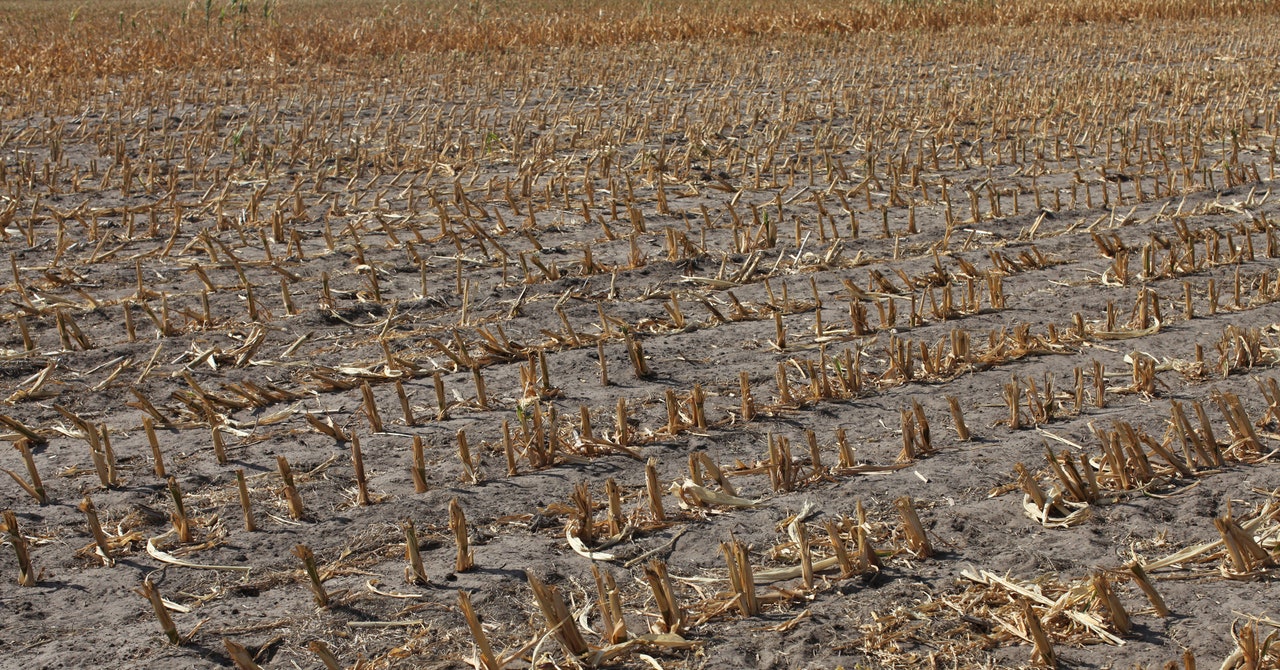
Flash droughts are also a global problem, with Brazil, India, and multiple countries in Africa facing the worst impacts. In 2010, a flash drought followed by a heat wave in Russia temporarily halted wheat exports, a major disruption for communities across the Middle East that depend on the country’s grain.
The damage flash droughts can cause depends on the crop and the time of year, said Dennis Todey, director of the Midwest Climate Hub for the US Department of Agriculture. Corn is the most vulnerable during its pollination season in mid-summer, while soybeans are affected in August and wheat during planting season in the spring.
Drought is a natural part of the climate in this region, Todey said, particularly in the western part of the Corn Belt—a region that encompasses the Midwest and the Great Plains. Many farmers have learned to adapt and integrate dry conditions into their planting cycles. But what makes flash droughts so dangerous is their rapid onset, Todey said, leaving little time for agricultural producers to prepare.
“Drought most times is thought of as a slow-starting and then a slow-stopping event,” Todey said. “In a flash drought setting … instead of just starting to dry out gradually, you have surfaces that dry out very quickly; you have some newly planted crops that are starting to be stressed more quickly.”
Many farmers don’t know if they’re starting to experience a drought, though, until expected rains fail to appear. Rainfall in mid-October helped ease the flash drought that began in Oklahoma in September, but after that a much longer drought set in, said Keeff Felty, a fourth-generation wheat and cotton farmer in the southwestern part of the state. As a result, some of his crop never germinated, while his overall yield dropped when it came time for the harvest.
“There’s a lot of information out there, and you have to avail yourself of what works best for you, but you also have to be prepared for it to go totally south,” Felty said. “Nobody saw [the drought] coming, and it’s just a fact of the weather that we don’t have any control over it. It’s just life.”
Typical droughts can last months or even years—the western US is currently experiencing its third decade of “megadrought”—while flash droughts can end more quickly, within weeks or months, Yang said. And they can hit in relatively wet areas, including the eastern part of the country, where drought conditions are much rarer than in the West.
The main reason they’re occurring faster, Yang said, is climate change. As the air warms, it can lead to more evaporation and dry out the soil. This can occur even in areas that expect to receive more rainfall overall because of climate change, because scientists project that rainfall will be unevenly distributed—falling in more extreme events and making other parts of the year drier.
“Every [recent] decade we have seen is the warmest decade in history,” Yang said. And with the world on track to blow past a global temperature that’s 1.5 degrees Celsius (2.7 degrees Fahrenheit) higher than the pre-industrial average, he expects to see both flash droughts and longer droughts occurring more frequently.
Researchers are working on improving their models to better predict flash droughts, Yang said, with the help of new technologies, such as more granular satellite monitoring and machine learning. The main marker they look for is high rates of evapotranspiration, when plants suck up water from the soil and then release it into the air through their leaves—a process that accelerates with high temperatures and winds and can be monitored with special cameras that detect fluorescence, or the heat emitted by plants.
If farmers can know when to anticipate a flash drought, Todey said, they can skip or delay planting, or reduce their fertilizer usage when they know a crop won’t grow. They can also adjust their planting schedule and take better care of their soil by minimizing tillage, which dries it out even more. But with less and less time to prepare for flash droughts, Todey said, some may have to make difficult choices about whether to plant at all.
“Agricultural producers naturally adapt to changing conditions,” Todey said. “But eventually there comes a point where [losses] become more frequent. People start going, ‘OK, this isn’t working.’”


